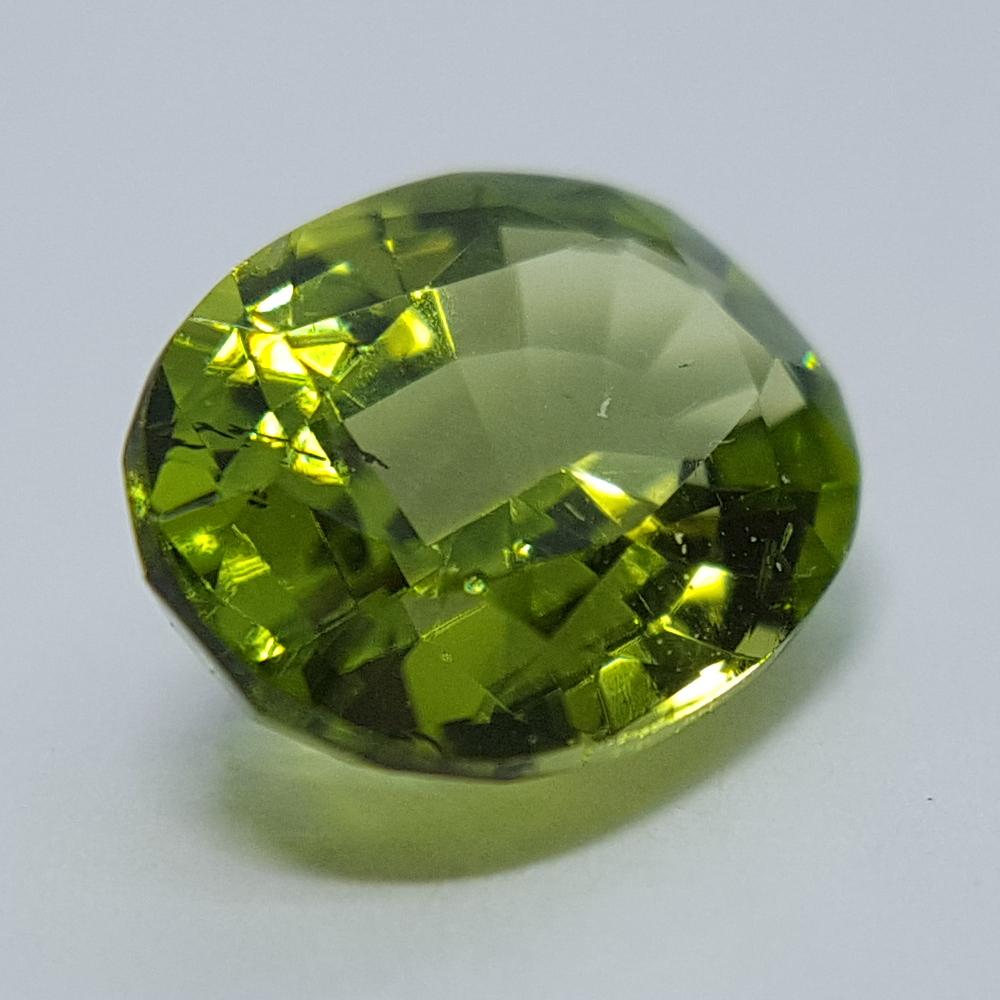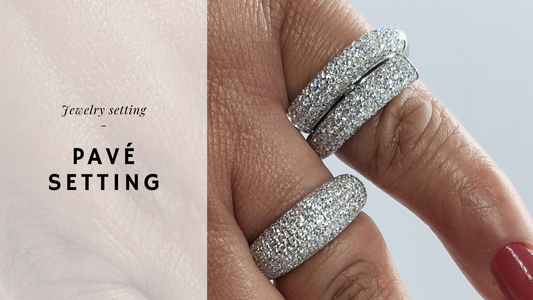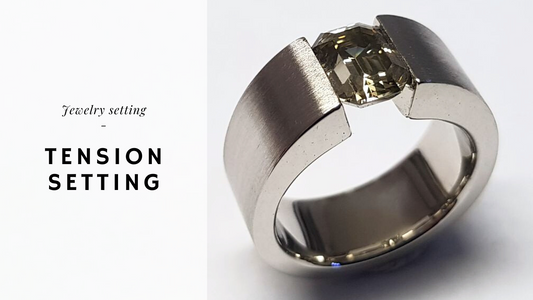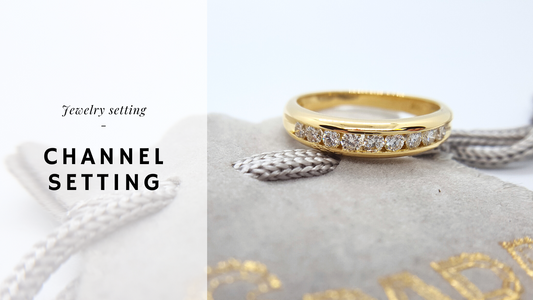
Shining with a bright green glow even at night, peridot was called the "gem of the sun" by the ancient Egyptians and the "evening emerald" by Romans. It was a favorite gemstone of Cleopatra and was historically mistaken for emerald. The pronunciation of this popular gem is often confused and should be pronounced pair-ee-doh, as opposed to pair-ee-dot.

Peridot's name origin is uncertain, but several theories exist. Some sources speculate that it comes from the 13th century Middle English word peridote, meaning "bright spot or bright button", an apt description for this gem, given its brilliance. Other sources attribute it to the French peritot, meaning unclear, probably due to its silky appearance. While some sources suggest the word peridot comes from the Greek peridona, indicating "plentiful", this seems unlikely because this gem was scarce even in classical times. Given the ancient source of peridot, the most likely candidate is the Arabic word faridat, which simply means "gem".
Popular in early Greek and Roman jewelry, peridot has been coveted since 1500 BC, when the Egyptians started mining it on Zeberget Island, later known as St. John's Island, about 50 miles off the Egyptian coast in the Red Sea. Interestingly, zabargad is the Arabic word for peridot.
Peridot mining was traditionally done at night, when the gem's natural glow made it easier to spot. The ancient Egyptians even believed that peridot became invisible under the sun's rays. They also believed that the gem was colored by the golden glow of their sun god, Ra, and was, thus, a powerful protector from harm.

Hawaiians believe peridot is the goddess Pele's tears, while it is mentioned in the Bible (using its old name chrysolite, meaning "golden stone" in Greek) as being one of the "stones of fire" (Ezeklel 28:13-16) that was given to Moses and set in the breastplate of Aaron (Exodus 28:15-30). Peridot is also one of the 12 gemstones set in the foundations of the city walls of Jerusalem (Revelations 21:19) and associated with the Apostle Bartholomew.
While Cleopatra reportedly had a fine collection of "emerald" jewelry, it was, in reality, predominantly peridot. The Ottoman Sultans gathered the largest collection of peridot during their 600-year reign, from 1300-1918. with an impressive array of loose gemstones as well as earrings, rings, and other jewelry. Powdered peridot has been used to cure asthma, and a peridot placed under the tongue of someone in the grip of a fever was believed to lessen their thirst. Legend has it that drinking from a peridot goblet can increase the potency of medicines.
Pirates believed peridot had the power to drive away evil spirits (and the night's terrors), especially if set in gold. But for protection from evil spirits, they believed it had to be pierced, strung on donkey hair, and worn on the left arm.
Possibly the most unusual peridot comes from meteorites and is called pallasites, after their 1772 discoverer, a German scientist called Peter Simon Pallas. Some of these stones have even been faceted and set in jewelry-one of the few extraterrestrial gemstones known to man. In 2003, peridot was discovered on Mars, making it the first gemstone to be discovered on another planet.

Peridot is the gem variety of olivine and exhibits colors ranging from golden lime greens to rich grass greens. Traditionally, the most coveted color hues have been the rich grass greens. However, many peridots with slight yellowish hues still exhibit attractive colors that are extremely popular. This once again demonstrates that your individual preference should always be the primary factor when collecting colored gemstones.
Gems that owe their color to basic elements in their chemical formulas are termed idiochromatic, or "self colored", and allochromatic, or "other colored", if they are colorless when pure. In the case of peridot, the coloring agent is iron. Since iron is part of the gem's formula, it always has some color (green to yellowish green). Because of the way peridot splits and bends light, it has an attractive, velvety, silky appearance with a shining rich glow.



